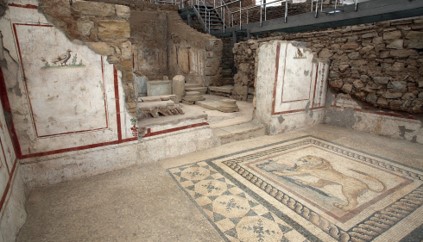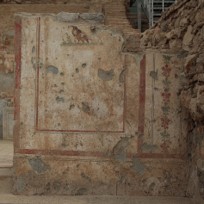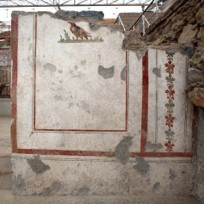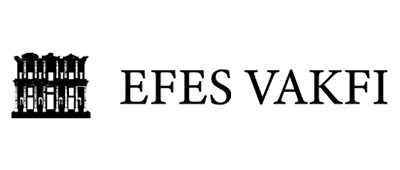

The so-called "Lion’s Room", named after its beautiful floor mosaic depicting a lion, is located within Terrace House 2 at the center of ancient Ephesus. This complex once housed seven luxurious apartments built on three artificial terraces. Room 17 is part of Residential Unit 3.
Reflecting the upper-class status of its residents, all apartments were lavishly furnished. In addition to marble decorations and mosaic floors, nearly all rooms were adorned with wall paintings dating from the 1st to the 3rd century AD.
The walls reveal up to seven layers of ornamental painting, serving as valuable historical records of daily life in Roman Imperial Ephesus. Even today, these layers provide remarkable insights into the residents’ tastes, aesthetic preferences, and modes of self-representation.
Since 2000, a protective roof covering approximately 4,000 m² has shielded Terrace House 2, preserving its unique and fragile wall paintings and mosaics. This structure allows visitors to admire the artworks in their original setting rather than in a museum.
The building is partially open to the public, and visiting it is a highlight of any tour through the ancient city.
What Can Be Seen Today?
The northern and western walls of the Lion’s Room (17) have mostly collapsed. However, the wall paintings on the eastern and southern walls remain partially preserved, dating back to the mid-2nd century AD.
The red-framed main fields are separated by vertical ornamental strips and decorated with various birds. Five birds have been preserved, perched alternately on a grass border or a branch. These include:
Two partridges in shades of brown, black, and yellow. One of them has later contours, possibly traced by a child, giving it a slightly awkward appearance.
Two small birds in green and yellow.
A grey dove with red legs and a red beak, whose contours were also traced with an acute stylus.
Condition of the Wall Paintings
The wall paintings of Terrace House 2 have suffered significant deterioration due to both ancient damages and environmental factors, such as fluctuations in temperature and humidity, as well as dust accumulation following their excavation over the past 30 years. These fragile artworks require careful restoration to ensure their long-term preservation.
Restoration Efforts
To safeguard and restore these precious paintings, restorers have undertaken the following measures:
Stabilizing the paintings and the underlying mortar
Filling gaps and missing sections
Removing previous improper interventions
Revealing original details wherever possible
Conducting general cleaning
Filling missing patches with mortar and matching them to the original surface
Performing scientific analysis
Documenting all findings




